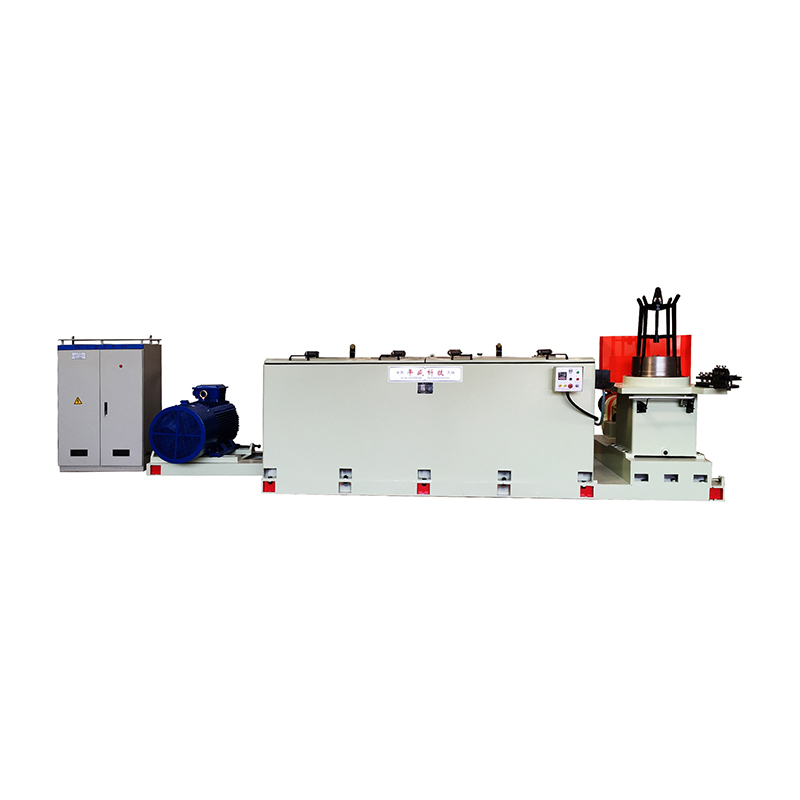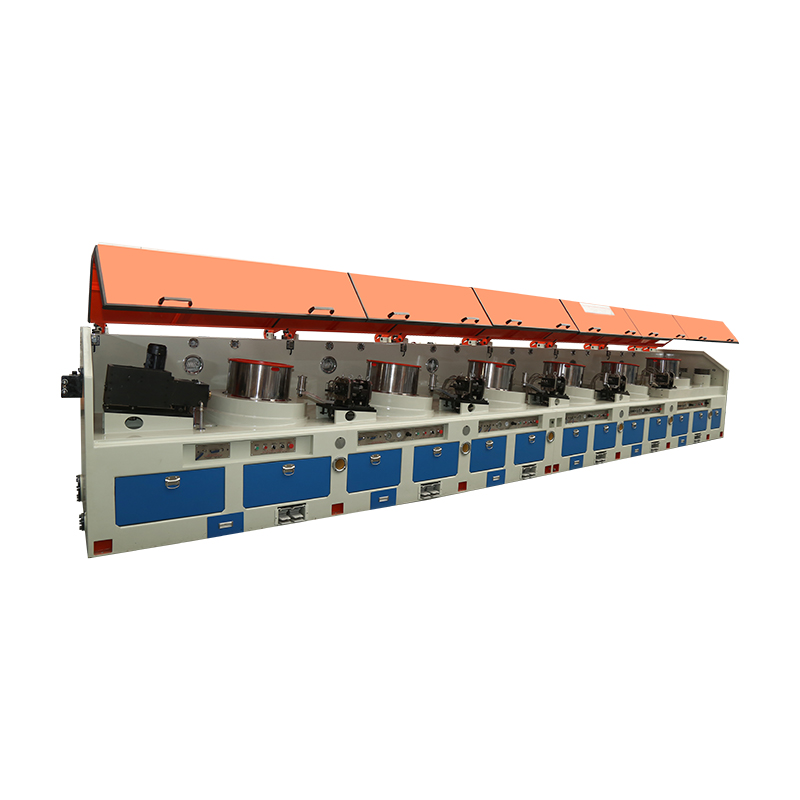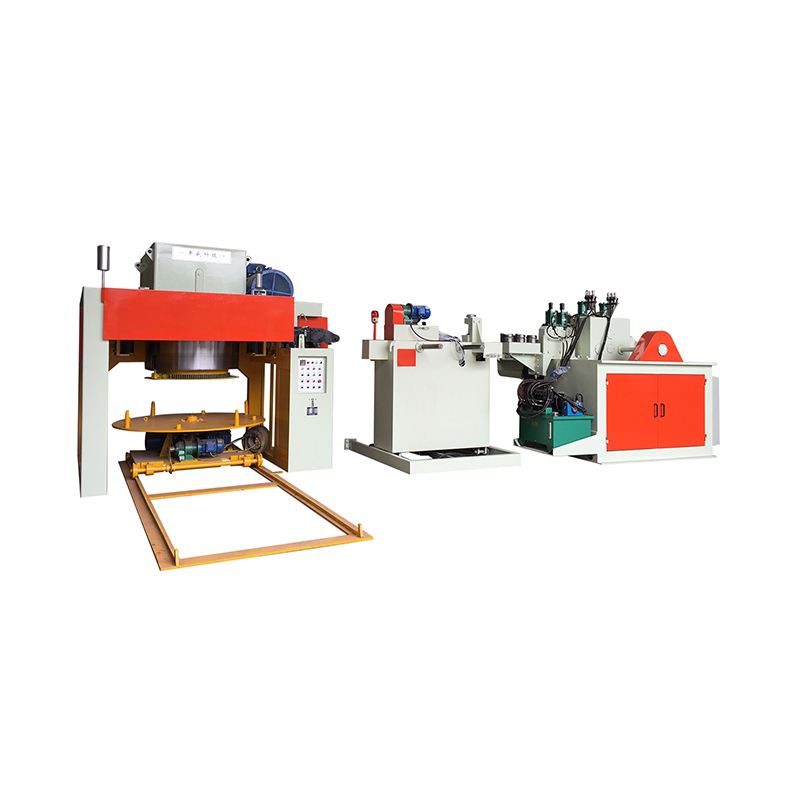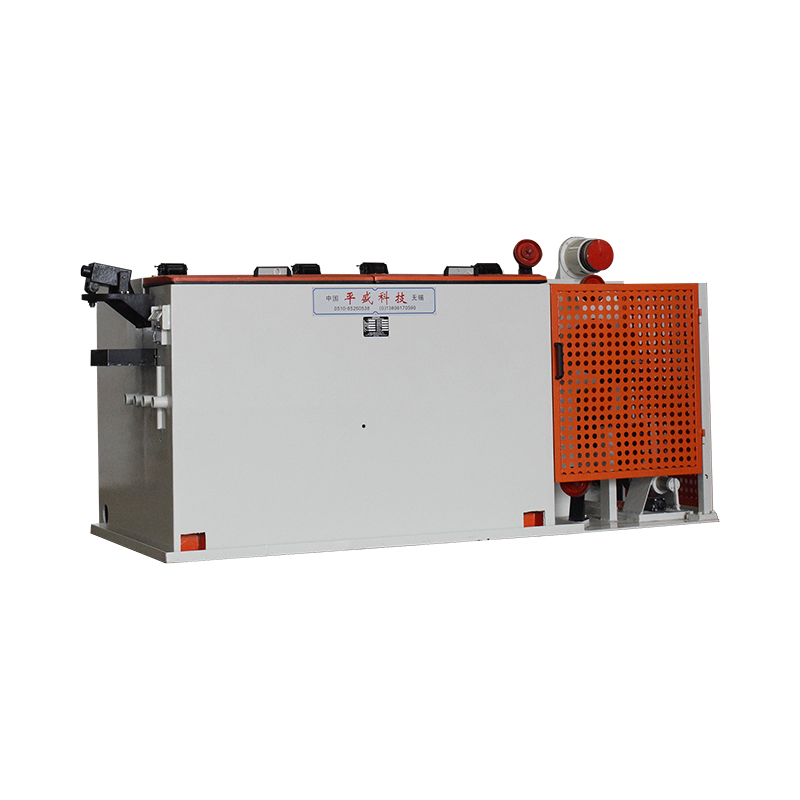What Is a Wet Wire Drawing Machine and Why Is It Vital for High-Precision Metal Wire Production?
In the modern metal processing industry, the wire drawing process has extremely high requirements for product precision, surface quality and mechanical properties. Among many wire drawing equipment, the Wet Wire Drawing Machine has become the preferred equipment for manufacturing fine wires, high-strength wires and bright surface wires due to its superior lubrication and cooling performance and efficient and stable processing capabilities. So, what is a wet wire drawing machine? What are its structures, working principles, advantages and application scenarios?
1. What is a wet wire drawing machine?
A wet wire drawing machine is a special equipment that draws thicker metal wires into thin wires by completing the wire drawing process in a lubricating fluid. Unlike dry wire drawing, the mold and wire of the wet wire drawing machine are always immersed in lubricating fluid, with a lower friction coefficient, which effectively reduces the surface damage and temperature rise of the wire during the drawing process.
Its application covers high-precision production of various metal wires from steel wire, stainless steel wire, copper wire, aluminum wire to alloy wire, especially suitable for processingfine wire and ultra-fine wire (diameter <0.5mm).
2. What is the working principle of Wet Wire Drawing Machine?
The basic working principle of wet wire drawing machine is to pass the wire through one or more drawing dies (drawing dies) in turn, and gradually reduce its diameter. The entire wire drawing process is carried out when the wire is immersed in lubricating fluid.
The specific process is as follows:
Wire preparation: install the thick wire or coil on the wire pay-off rack;
Pretreatment: such as pickling and descaling to improve the quality of wire drawing;
Lubrication system: the wire and the die are immersed in lubricant (usually soap, grease or emulsion);
Drawing die array: multiple dies reduce the diameter step by step;
Traction system: the reel driven by the motor continuously pulls the wire;
Wire take-up system: the drawn fine wire is wound into a roll for subsequent processing.
During the whole process, the lubricating fluid not only cools the die and wire, but also reduces friction and metal fatigue, which is the core guarantee for the efficient operation of the wet wire drawing machine.

3. What is the difference between the wet wire drawing machine and the dry wire drawing machine?
Comparison items Wet wire drawing machine (Wet) Dry wire drawing machine (Dry)
Lubrication method The lubricating fluid directly soaks the die and wire The lubricating powder or grease adheres to the surface of the die
Cooling effect Excellent, suitable for high-speed and long-term processing Generally, intermittent cooling is required
Applicable wire diameter Fine wire, small diameter wire (<0.5mm) Thick wire, large diameter wire (>1.0mm)
Surface quality Bright and delicate, almost no scratches The surface is slightly rough and prone to friction marks
Wire drawing speed Fast, high degree of automation Relatively slow
Maintenance difficulty High, need to clean the lubrication system and replace the liquid Simple structure, easy maintenance
4. What are the main components of the wet wire drawing machine?
A standard wet wire drawing machine consists of several key modules:
Pay-off rack: install the original metal wire reel and control the wire tension;
Wire drawing machine: contains multiple wire drawing dies, traction wheels and lubrication chambers;
Lubrication and cooling system: includes lubrication tank, cooler, pump circulation system;
Drawing Dies: made of carbide or diamond, arranged in order;
Electronic control system: automatic tension adjustment, speed control, fault alarm;
Wire collection system: collects finished wires, often coiling, shaft collection or wire arrangement devices.
Some high-end equipment is also equipped with an online detection system to monitor parameters such as wire diameter, tension, speed, etc. in real time to ensure product consistency.
5. What are the significant advantages of Wet Wire Drawing Machine?
1. Excellent surface treatment ability
The effect of lubricating fluid significantly reduces the friction between the wire and the die, making the surface smoother, without scratches or black spots, suitable for high-demand products such as spring wire, electronic wire, etc.
2. High speed and high efficiency
The friction resistance is small in the wet environment, which can greatly increase the wire drawing speed (up to 30m/s or more), significantly improving production capacity.
3. Low energy consumption and low loss
Lubricating cooling effectively reduces thermal stress, reduces mold wear and energy consumption, and increases mold service life.
4. Can process thinner wires
Suitable for processing ultra-fine wires, such as stainless steel filaments, electroplated wires, alloy wires, etc., with extremely high diameter accuracy requirements.
5. Higher stability and automation level
With the PLC automatic control system, it can realize automatic functions such as multi-channel synchronous wire drawing, wire break detection, and tension adjustment.
6. In which industries is the Wet Wire Drawing Machine widely used?
Due to its excellent performance, wet wire drawing machines are widely used in the following industries:
Stainless steel wire manufacturing: such as braided mesh wire, spring wire, precision medical wire;
Copper wire, wire and cable industry: used for fine drawing process of electromagnetic wire and communication wire;
Electronic components: used for resistance wire, electric heating wire, electron beam lead wire;
Welding wire manufacturing: such as CO₂ gas shielded welding wire, aluminum welding wire;
Textile metal wire: used for conductive fiber, metal textiles;
Medical equipment: ultra-high precision fields such as heart stent wire and implant filament.
7. How to choose a suitable Wet Wire Drawing Machine?
When choosing a wet wire drawing machine, the following factors should be considered comprehensively:
Raw material type: such as stainless steel, carbon steel, copper or aluminum;
Target wire diameter range: Different equipment supports different minimum and maximum diameters;
Production requirements: Determine the number of molds and the power of the traction motor;
Lubrication system capacity and type: Materials with high cooling requirements require a stronger cooling system;
Automation degree: Whether it supports online detection, fault diagnosis, and remote control;
Plant space and layout: Equipment length, wire direction, etc. need to be planned on site;
Equipment brand and after-sales service: High-quality brands can provide more stable performance and technical support.
8. Wet Wire Drawing Machine Maintenance Guide
Efficient and stable operation is inseparable from good daily maintenance:
Regularly replace lubricating fluid: prevent emulsion deterioration and scale accumulation from affecting wire drawing quality;
Clean molds and lubrication grooves: prevent impurities from scratching wires or clogging the system;
Check the traction system: tighten the tensioning device in time to prevent wire jump;
Monitor the electrical system: ensure the normal operation of PLC and motor controller;
Lubricate mechanical parts: such as chains, bearings, and transmission mechanisms to maintain flexible rotation;
Regularly calibrate wire diameter monitoring equipment: ensure the consistency of finished products.
9. Frequently Asked Questions (FAQ)
Q1: Can wet wire drawing machines be used for thick wire drawing?
A: Generally not recommended. The initial drawing stage of thick wire is more suitable for dry wire drawing, and wet wire drawing is more suitable for fine processing or fine drawing processes.
Q2: Must the lubricating fluid be recycled?
A: Yes, the circulation system can control the liquid temperature and cleanliness, ensure the quality of wire drawing, and save the cost of use.
Q3: How to determine whether the lubricating fluid needs to be replaced?
A: Aging can be judged by appearance (darkening, emulsification), viscosity changes, and pH value tests.
Q4: Will wet wire drawing machines cause environmental pollution?
A: Modern equipment is equipped with a closed circulation system and a filter device to effectively control pollution.
Conclusion: Wet Wire Drawing Machine - A Must-Have for High-End Wire Manufacturing
At a time when metal processing is constantly moving towards high precision, high speed, environmental protection and energy saving, the Wet Wire Drawing Machine has become an indispensable core equipment for various high-end wire manufacturers with its excellent wire drawing quality and production efficiency. It not only increases the added value of products, but also is an important weapon to help companies occupy the high-end market.
Choosing a wet wire drawing machine that suits your own process is to open the door to precision, efficiency and sustainability for wire manufacturing processes. In the future, with the further application of intelligent manufacturing technology, wet wire drawing equipment will also move towards a new era of greater intelligence, environmental protection and automation.


 EN
EN
 English
English Español
Español Français
Français Português
Português عربى
عربى














